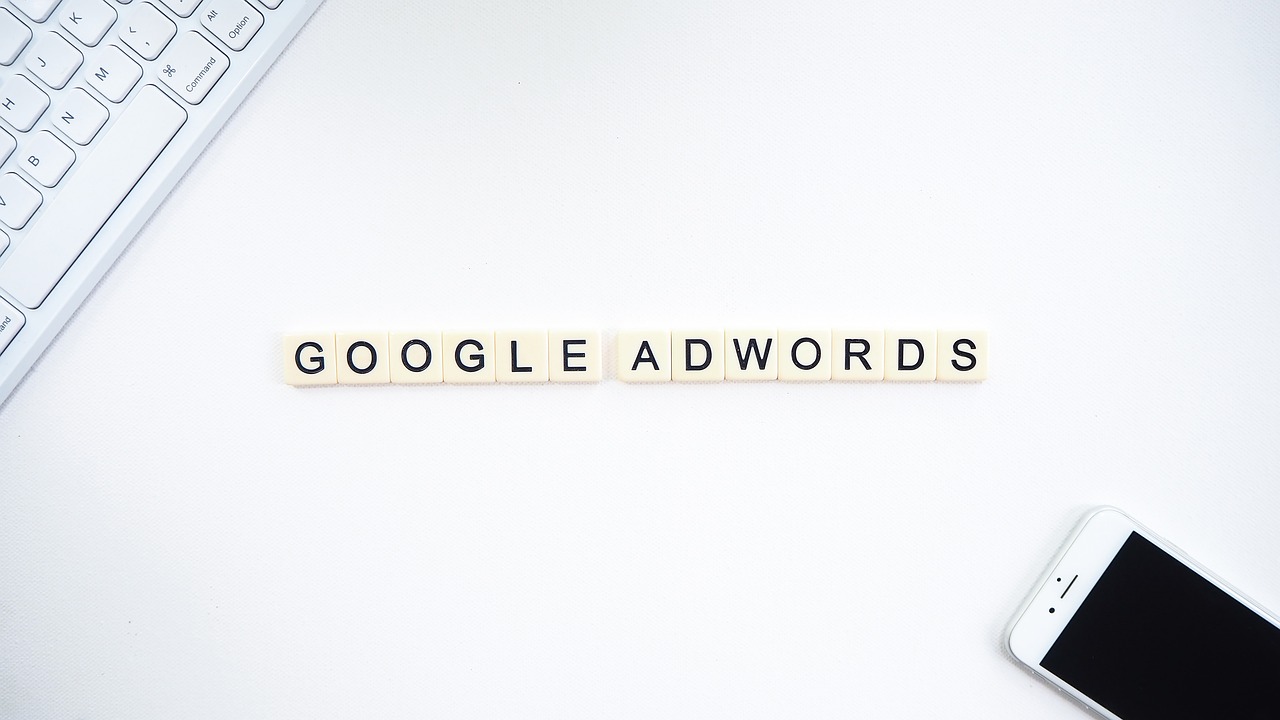
Advertisers may find it overwhelming to determine the most suitable platform for posting advertisements among the plethora of advertising outlets. However, Google, the search engine titan, can aid businesses in converting leads and diminishing their ROAS, thereby providing a solution to this predicament.
Brands have the option to advertise on various platforms, not just Google Search, as they provide a range of products like Gmail and YouTube. This makes it a versatile advertising platform where businesses can devise enticing ads and reach their desired audience through text, display, and video advertising.
The objective of this article is to examine the various advantages of Google Ads, which include enhancing brand recognition and gaining a competitive edge.
Google Ads
Google Ads is a service for online advertising that allows businesses to showcase their promotional marketing materials in Google’s search rankings. The presence of a small “Ad” label on a search result indicates that it is an advertisement.
By utilizing Google Ads services, your business can customize a campaign based on its objectives, geographical location, preferred target audience, specific keywords, and allocated budget.
If a user enters one of your targeted keywords into Google, the relevant ad is displayed in the search results and triggers your ad campaign. For instance, if someone searches for the term “best restaurants in Tampa, Florida” and your ad campaign is targeting these keywords, your ad will appear at the top of their search results page.
In order to determine which ads appear at the top of search engines as ad space, Google Ads conducts a virtual auction. Companies have the opportunity to bid for the placement of these ads using three primary bidding strategies.
- Cost per click (CPC) – This strategy is based on the number of clicks on your ad. Companies only pay when someone visits their site. Higher CPC bids increase the chances of appearing in search results.
- Cost per impressions (CPM) – This is based on the time your ad is displayed on Google’s search engine results. Businesses that value brand visibility more than clicks often choose this strategy.
- Cost per action (CPA) – This is the rate a business pays for each completed action taken on their site after clicking on their ad, also known as a conversion. The conversion could be anything from hitting a “buy” button to completing an online survey to signing up for a newsletter.
How Google Ads Campaigns Works
Google Ads provides a range of products that aid advertisers in enhancing their online visibility and boosting sales.
Google Ads, display ads, and video advertising are the most popular online advertising products. They are visible on various platforms of Google, including YouTube. Moreover, Google provides sponsored content on its Shopping page to enhance online traffic and boost sales for e-commerce brands, leading to consistent business growth.
To begin, use your Gmail account to sign in to Google Ads and proceed through the instructions to establish a campaign. At this stage, you will be able to specify the desired advertising type and the objectives you aim to accomplish.
Benefits of Google Ads
1. Enhances brand awareness
Google Ads is considered to be one of the most effective methods for businesses to enhance brand awareness and boost sales. Its worldwide usage is one of the factors contributing to increased visibility, with a staggering 4.3 billion users across the globe using Google.
The best thing about it is that Google can cater to businesses from all industries. Given the wide range of users with diverse backgrounds and interests, Google becomes an ideal platform to boost revenue. It may come as a surprise, but the arts and entertainment sector achieves the highest CTR among all industries on Google Ads.
As mentioned earlier, Google offers various advertising options to promote your brand and products/services. This guarantees that your audience will pay attention to you regardless of their stage in the customer journey.
By using Google Ads, you have the ability to draw in potential customers who are searching for details about your products. Additionally, by utilizing video ads, you can capture the attention of individuals who are casually watching videos on YouTube.
2. Outrank competitors
With its flexibility, Google Ads offers the opportunity to surpass your competitors’ current efforts in multiple ways. Moreover, enhanced brand awareness will enable businesses to easily outperform their competition.
Using Google Ads as an example, you have the option to utilize competitor tools or search for industry-specific keywords to identify the ones already being used by your competitors. By incorporating those same search engine terms into your strategy, you can enhance your visibility.
Google Ads allows you to have visibility into your competitors’ actions and the way they bid on keywords.
By analyzing the strategies of your competitors, you can make necessary adjustments to your own strategies. For instance, if your competitors are bidding on the same keywords as you, you can consider increasing your CPC, trying less competitive keyword variations, narrowing down your target audience, or enhancing the quality of your ad content. Alternatively, you can opt for a different bidding strategy such as CPM or CPA bidding.
You can also use this strategy for other Google products, like Shopping. If you see that more competitors are using organic Google Shopping results, you have the option to sponsor your products. This will give them better visibility in searches and result in more customers purchasing your products.
Google provides a range of tools for assessing the performance of your campaign in relation to competitors. One such tool is Google Ads Auction Insights, where advertisers can compare their ad performance with that of their top rivals.
3. Increases leads
When creating their campaigns, advertisers will be prompted to select specific advertising goals. With the appropriate Google Ads strategy, this not only increases leads, but also pushes them deeper into the sales funnel, leading to more sales.
According to Google, one of the most common advertising objectives is to increase leads and drive sales. In order to help advertisers achieve this goal, Google provides all the necessary tools to boost conversions. Although Google Ads is a widely used approach for generating leads, there are alternative options available through Google’s search partners that can attract significant website traffic and improve your visibility.
When setting up your ad campaign, you will be required to provide audience information, including demographics and interests. This is done to ensure that your ads are displayed on appropriate partner websites, thereby reaching potential customers of high value.
Use a tool like Google Analytics to collect important data about your audience, including their geographic location and the proportion of new visitors to returning visitors on your website.
Apart from lead-generating campaigns, traffic-generating campaigns can also serve these objectives. Once more individuals visit your website, they consume the provided information and establish a connection with your brand. Consequently, they can accomplish various lead-generating objectives, like subscribing to an email newsletter.
In order to guarantee that your ads are producing leads, advertisers should utilize Google’s campaign tools for measuring your success. For instance, Google provides a complimentary Conversion Tracking tool that allows you to keep track of the number of conversions you generate, the cost per conversion, the overall conversion rate, as well as specific data like keyword and landing page conversions.
4. Faster results than organic SEO
An SEO campaign typically requires a minimum of three months to enhance SERP performance and increase website traffic. Nonetheless, advertisements of superior quality can generate impressions and clicks within just 24 hours.
Furthermore: Additionally
- 51% also stated Google Ads was overall more effective than organic SEO.
- 49% said Google Ads resulted in a better conversion rate, so an advertising campaign has more benefits than organic SEO.
Ad campaigns may not achieve quick results, therefore advertisers need to develop a campaign that generates conversions. In order to secure the top position on SERPs using Google Ads, advertisers should bid on keywords that have high traffic and low competition, and search for search terms with a low CPC.
Additionally, it is worth noting that an SEO strategy and a Google Ads strategy can work together harmoniously, leading to our subsequent point.
5. Supports a content marketing strategy
By following a step-by-step approach, you can effectively merge paid and organic strategies to enhance your marketing results. SEO encompasses various techniques used to attain top rankings in organic search engine results pages (SERPs), and these practices are also applicable to other offerings like Google Ads and YouTube.
In what way can businesses effectively combine these? Advertisers have the option to utilize the same keywords in both their paid and organic strategies.
However, if they desire to achieve a high ranking in a short amount of time for a newly targeted keyword, they have the option to employ a paid strategy to test it prior to optimizing it for organic content.
By wisely designing an advertising strategy, advertisers can achieve a satisfactory ROI; however, in the long term, implementing SEO proves to be more cost-effective. Given the interconnection between Google Ads and SEO, investing in both paid and organic techniques allows advertisers to reduce expenses.
6. Reach the right audience
Google Ads allows you to tailor your target audience based on factors such as location, keywords, language, interests, and more. Additionally, you have the ability to focus on individuals who have demonstrated interest in your product through their search history or visited specific pages on your website. This strategic approach ensures that your website is only visible to valuable leads, preventing unnecessary expenditure on ineffective advertising.
7. Stay connected with customers
If visitors from a Google ad come to your website but do not engage with it, your company may miss out on potential conversion opportunities.
Google Ads enables you to retarget visitors by exhibiting banner ads to them on different websites or apps, thereby allowing you to create retargeting ads for customers who have browsed a particular service or product page but have not yet made a purchase.
By utilizing different types of ads such as video ads, image and text ads, or dynamic ads that track a person’s activity on a particular website, you can effectively maintain a connection with potential customers who may not be actively searching for your company.
8. Monitor and measure ad campaign performance
Google Ads offers comprehensive analytics for your ad campaigns, encompassing metrics such as clicks, impressions, generated traffic, conversions, and other relevant data.
Google Ad reports have the capability to track the origin of leads, the specific keywords that activated the ad, and the most effective formats. This enables easy identification of the most successful campaigns, allowing for modifications to improve results or cessation of campaigns that are not yielding desired outcomes.
9. Regulate the amount of money you allocate to your campaign.
One of the main benefits of using Google Ads is the ability to have precise control over your campaign budget. Firstly, you can focus on specific keywords and opt for a bidding strategy that aligns with your business’s top priorities, such as clicks, impressions, or conversions.
By following a step-by-step approach, you have the ability to assign a daily budget for each campaign, ensuring that you do not exceed your expenditure while maximizing your target audience’s reach. Additionally, if the expenses become excessive or you intend to make modifications to your ad content, you can pause your campaigns whenever necessary.
10. Maximize return on investment (ROI)
Google Ads have the potential to offer businesses a substantial return on investment. Firstly, by narrowing down your target audience to those who are most likely to visit your site, you can effectively increase conversions.
Google Ads analytics provide the ability to analyze campaign expenses and assess the performance of your ads, which is crucial for businesses seeking to enhance their marketing tactics and make informed decisions in the future.




